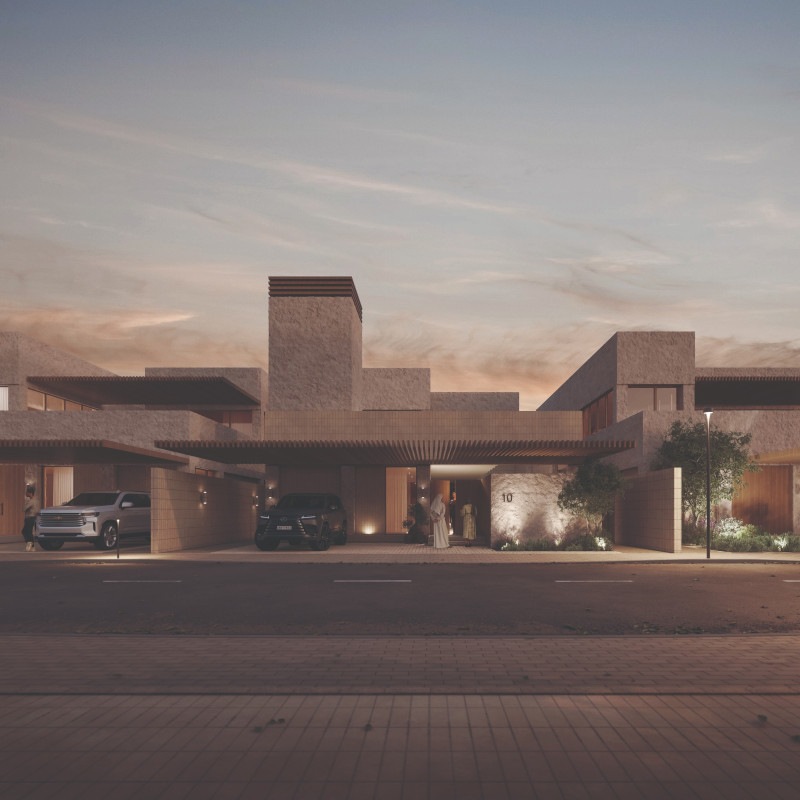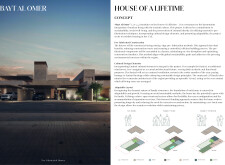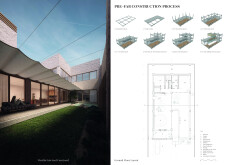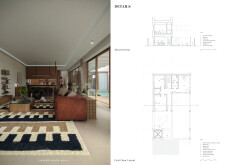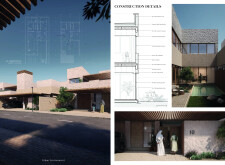5 key facts about this project
### Concept Overview
Bayt Al Omer, translating to "House of a Lifetime," is situated in the UAE and embodies a thoughtful design that merges contemporary living with the region's cultural heritage. The project's primary focus is on sustainability while encouraging social interaction and the preservation of tradition. By implementing advanced prefabrication techniques, it aims to enhance construction efficiency and minimize environmental impact, effectively responding to the diverse needs of modern family dynamics.
### Prefabricated Construction and Adaptable Design
The use of prefabrication in Bayt Al Omer allows for a significant reduction in construction waste and facilitates a streamlined building process. Components are manufactured in a controlled factory environment, which lessens on-site disruption and expedites overall construction time. This approach addresses pressing environmental concerns while aligning with broader sustainability initiatives.
The architectural layout promotes flexibility, catering to evolving family structures. This adaptable design can accommodate potential expansions without substantial renovations, ensuring privacy and fostering community cohesion. Specific zones are delineated for living, resting, and communal activities, supporting the diverse dynamics of family life.
### Cultural Integration and Materiality
Bayt Al Omer incorporates traditional Emirati design elements, notably the Barjeel, which functions as both a striking architectural feature and a natural cooling system. This integration aids in the preservation of Emirati architectural vernacular while promoting sustainable living principles. The arrangement of spaces includes a central courtyard that enhances airflow and encourages social gatherings, echoing the essence of Emirati hospitality.
Material selection reflects a blend of modern and traditional aesthetics, utilizing stone slip cladding for durability, prefabricated concrete slabs for efficiency, and double-glazing windows to improve thermal performance. Elements such as local wood finishes and glass features are strategically employed to create inviting interiors that establish a strong connection to the surrounding environment. The incorporation of insulation layers further enhances energy efficiency, maintaining comfort while minimizing reliance on artificial cooling systems.


